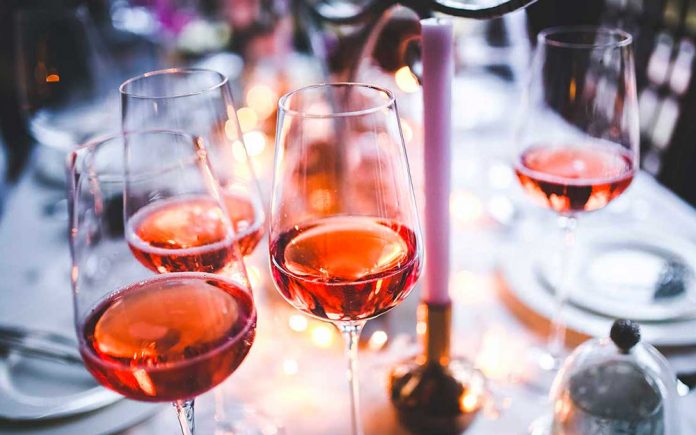
By Rick Riozza
I don’t consider myself to be an alarmist; rather, I think I’m pretty even keeled most of the time. But I apparently set off a few of our Champagne lovers with my article, “Here’s to a Sparkling New Year”, published a couple of weeks ago:
“But just a quick side note: I saw a brief clip of the latest CBS 60 Minutes program where climate change is definitely having a major impact on Champagne production in France. We’ve written on this phenomenon previously, so you readers shouldn’t be taken by surprise. The vineyards need to move north, and we need to be enjoying the stuff while it lasts.”
Well—okay, I only received a couple of emails, but-but, as far as “sample size”, it does show a concern from our desert dwelling wine enthusiasts—who know how hot things are getting—that Champagne production is indeed being challenged by climate change.
So let’s get some perspective: Historically, warm weather—especially in the cold regions of Europe, was very good news. Sometimes, back in the day, vintners had to add a bit of sugar to bolster the sour grapes of minimal sunlight. And in the freezing Champagne region of France, for so many years, the vintners did just that—known in France as “chaptalization”.
And generally speaking, in France for so many decades, heat was very, very good for the wine biz. But a recent 2016 study warned that the traditional cold French weather may not last for much longer, as temperatures keep rising. We remember the disastrous 2003 month-long heat spell that killed over 13,000 Frenchmen—not to sound flippant, but that was a bad sign.
Generally speaking, what hot weather brings are early grape harvests because the grapes ripen faster. This means the grape’s lovely lifetime on the vine is affected, and oftentimes diminishes the wine quality due to a change in the grape’s customary sugar, acid, phenol, and tannin content. And that could translate to a change in an expected taste of your favorite bubbly. Sure, winemakers—especially the Champenois can adapt to maintain the flavors they are known for—but for how long?
Global warming has caused Champagne growers to harvest their grapes 18 days earlier than they did 30 years ago. These effects of local warming have actually been beneficial for the quality of grape juice produced in the region. But they write that the beneficial effects are likely to continue if global warming is limited to a 2°C rise. Good luck!
As your trusted friendly neighborhood somm and wine steward, I can report that due to a combination of the pandemic, supply chain issues, a massive uptick in demand, along with extreme weather events, it’s all led to a shortage in Champagne these past holidays, and, it will probably continue—for how long, who knows.
In 2020, as the pandemic swept the globe, the Champagne industry saw a sharp drop in sales as restaurants and bars closed down and consumers saw less cause to celebrate. But toward the end of 2020, as CNBC reported, “sales began to rebound as life returned to some semblance of normalcy (the presidential election also led to a bump in bubbly sales.) While it’s too soon to tell how the category fared in 2021, it seems sales have exploded. Industry experts are anticipating that Champagne sales this year will surpass pre-pandemic levels.” But will we be able to find the stuff!
The issue appears to be hitting the high-end brands the most: Moet & Chandon, Dom Perignon, and Veuve Clicquot are sold out in many markets, and retailers are concerned about selling out of bubbly altogether. Alcohol delivery service Drizly recently surveyed 500 beverage retailers across the US and found that 80% are at least slightly concerned about running out of Champagne.
The CIVC, the Champagne trade group, sets limits on production each year, dictating how much of growers’ crops can be harvested, how much should be held back to create multi-vintage blends down the road, and how much will be used to make Champagne vinegar.
“In 2020, at the height of pandemic lockdowns, CIVC set the production limit at roughly 25% less than the year prior. Champagne must age for at least 15 months — longer for higher-end versions — which means the limits set in 2020 are likely to have a domino effect,” Wine Enthusiast reports.
Last year’s Champagne harvest was seriously damaged due to extreme weather including heat, frost, and severe rains. Frost took out 30% of the region’s 2021 crops, mildew destroyed another 25% or 30%, and hail damaged over 1,200 acres of vineyards. As mentioned in the CBS 60 Minutes program, one grower in the Champagne region estimated that her family’s vineyard had lost 90% of its grapes as a result of weather.
Aprilaire, the climate watcher, writes “The “code red” designation is a justified warning, but all hope is not lost. There are changes we can make globally that will prevent us from experiencing the most extreme impacts of climate change down the road.
“There is some debate about the level of responsibility placed on individuals to offset climate change. Various reports estimate that around 100 corporations are responsible for about 70% of all greenhouse gas emissions, making individual actions seem minimal in comparison.
“While it’s true that the largest impact will come from decisions made by governments and corporations, individuals can embrace the role they have in the equation. As part of their “Act Now” program, the United Nations has picked out 10 actions that individuals can take to both contribute to lower greenhouse gas emissions, and spread awareness of the importance of this issue: www.un.org/en/actnow.”
Wine Spectator just wrote,” Consumers needn’t panic buy. Champagne has a recent string of outstanding vintages in hand with 2018, 2019, and 2020 harvests.” Hey! I could use a nice chilled glass of Champagne right about now! Cheers!












































